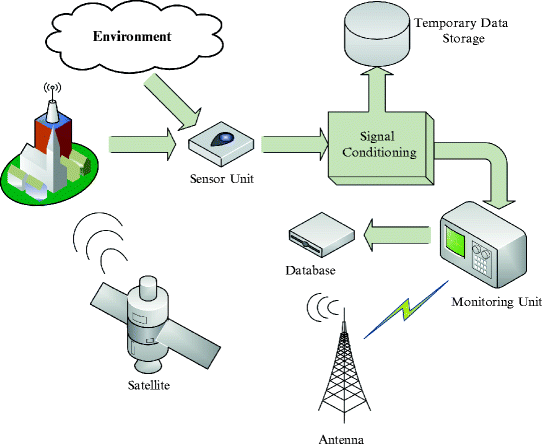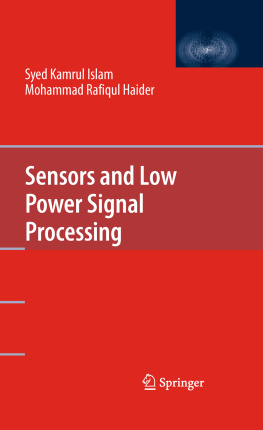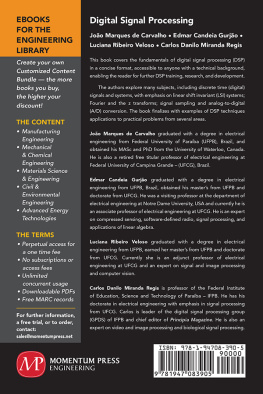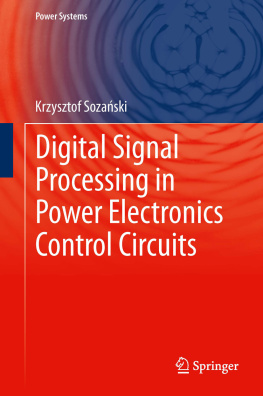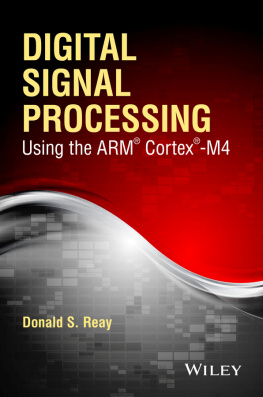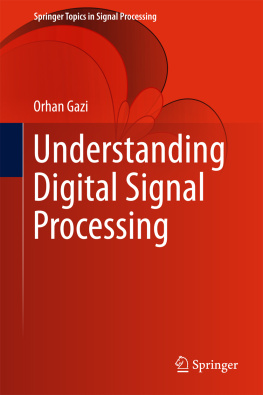1.1 Sensor Basics
The prolific growth of sensors and sensor technologies has an increasingly dramatic impact in our daily life. Portable microsensors and wireless links have brought security, reliability, and even harmony with our environment. The emerging field of smart sensors and wireless sensor networks is the best example for wide popularity of sensors in the recent years.
A sensor is basically a device that receives a signal or stimulus and responds to it in a distinctive manner, thus converting any physical or biological quantity into any measurable output signal. In our physical world, there are mainly six kinds of signals, which are of interest to the sensor community: electrical, mechanical, thermal, chemical, magnetic, and radiation. If the sensor output signal is electrical in nature, it can be further processed by signal processing electronics for various applications. Any device that can convert one kind of signal to another is called a transducer. Hence, in a common sense, it comes to our mind that sensor is basically a transducer, although it may not be always true. Typically, a transducer implies that the input and the output are not the same type of signals. On the other hand, a sensor may acquire signals that are not perceivable by human senses, or the input and the output signals of the sensor may be of the same kind. The desirable features of any generic sensors are
Sensitivity this represents the detection capability with respect to the sample concentration or amount. A highly sensitive sensor means it can sense the very low level of changes. Sensitivity is related with the noise performance of the sensors to and the inherent noise floor sets the theoretical limit beyond which the sensing element cannot recognize any more appreciable changes.
Selectivity this is the ability of any sensor to detect any desirable physical quantity among a variety of other nondesirable quantities. Most physical and chemical sensors operate in complex environments, where various parameters change simultaneously. Some sensors may have very high sensitivity in a pure sample environment but may work poorly with other samples.
Response Time this feature indicates how fast a sensor can react to the changes and generate electrical quantity depending upon the environmental changes.
Operating Life this is total lifetime of the sensor as measured by the repeatability of the measurement data within a specific threshold set by the application.
1.2 Sensor Types
There are a variety of classifications in the sensor world. A sensor may be classified depending upon the power supply requirement and types of output signals.
1.2.1 Power Supply Requirement
Depending on the power supply requirement, a sensor may be classified as an active sensor or a passive sensor.
Active Sensor if a sensor needs external power supply to generate the output signal, it is called an active sensor. An active sensor has a big advantage that the sensitivity of the device can be modified by controlling the power supply voltage, obviously at the expense of additional power dissipation.
Passive Sensor if the sensor output signal is generated from the sensor input signal or because of the changes of the sensing element, it is called a passive sensor. Thermocouple is an example of a passive sensor.
1.2.2 Types of Output Signal
A sensor output signal type may be analog or digital. Therefore, based on the type of the output signal, sensors can be classified as an analog sensor or a digital sensor.
Analog Sensor the output changes in a continuous way, and the information is usually embedded in the amplitude of the output signal. This type of sensor requires analog-to-digital converter (ADC) to process the signal in digital domain either for transmission or for display.
Digital Sensor the output changes in discrete steps. The digital sensors are more accurate and reliable than the analog sensor. However, they are not capable of measuring any physical quantity directly.
1.3 Measurement Systems
Most of the measuring equipments in our everyday life depend upon electrical signal, and hence rely on sensors. Electronic measurement systems provide greater flexibility and ease of operation. This is due to the fact that
(a)
Sensors can be designed for any physical or biological entity,
(b)
Sensor performance can be enhanced by the incorporation of electronic signal processing,
(c)
A variety of microelectronic circuits are available for signal conditioning,
(d)
Various display options exist for electronic signals, and
(e)
Wireless communication is a versatile means of communication for electrical signals.
A simple functional block diagram of a sensor network is shown in Fig.. The sensor unit manifests various types of sensors (i.e., pressure, temperature, humidity, air flow, etc.) to monitor various parameters of the environment or of our household appliances. The sensor unit then sends the signal to a signal conditioning block, where any changes of sensor signals is processed and manipulated to make it displayable in the monitoring unit. Sometimes, the signal conditioning unit maintains a temporary data storage or RAM to process the signal. The monitoring unit displays the pattern of changes and occasionally stores the data in a permanent database for future purpose. For routine check or for any abnormality sensed in the monitoring unit, communication is established between the monitoring unit and the application area, and alarm signal is deployed.
Fig. 1.1
Functional block diagram of sensor network
1.4 Applications
1.4.1 Health Care
Wearable sensors and health monitoring units allow huge volume of data to be collected and monitored in real time for next generation healthcare facilities. Data collected from various sensor units are further processed and diagnosed to reduce the inconvenience of regular visits to the heathcare provider []. This leads to the development of smart home care system facilitating both elderly and distant patients.
In smart home care system, various types of sensors can be implanted or placed within the vicinity of a human body. These sensor units can closely monitor various physiological changes and send the data to a nearby hub station such as cell phone or PDA. Then, using existing communication technologies, these data can be sent to a physician, nurse, or healthcare provider. The physicians can diagnose the data and initiate the necessary actions such as sending control signal for artificial dose control unit implanted into the body of the patient. This can facilitate the patients with telecare, which is a real-time inspection and removal of cognitive burden from some of the age-related memory declined issues. Smart home care can also facilitate other everyday activities, for example, control of medical devices, medicine reminder, object location, or emergency communication []. In this system, patients privacy and convenience can be greatly supported and enhanced because of the serving of the patient in his/her own home.
